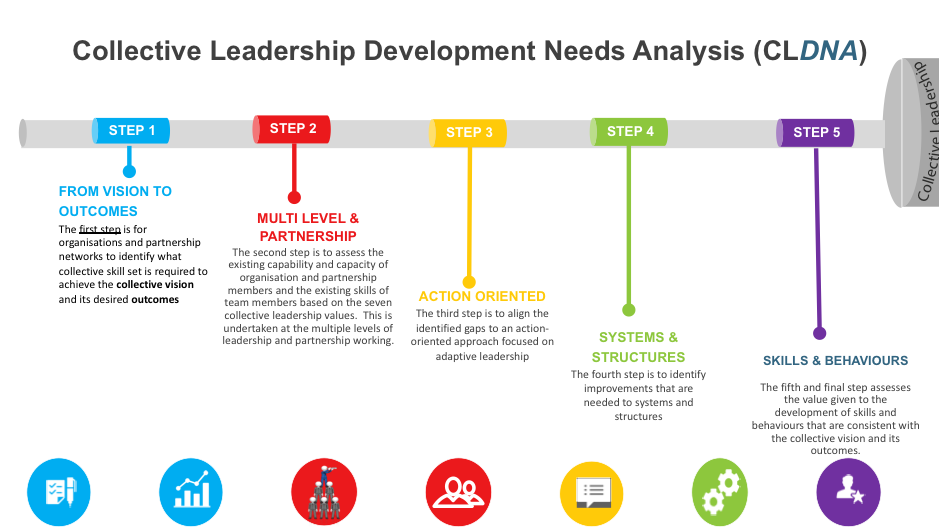
Collective Leadership Inventory
Working together collaborativelyApplication of the CLI

The Application of Collective Leadership Theory to Practice
One aspect of a theory of Collective leadership based on the CLI research is that leadership most effectvely takes place through networks focused on shared beliefs, values and identities. Applying this in practice will help in shaping behaviours and explain why and how shared values can actually mitigate the flaws of individual leaders through collective leadership. It cannot stress enough the importance of practicing collective leadership as a form of leading through 360° intelligent networks, knowledge and skills (LINKS360° ®). It is a transformative process of leadership which gives as much emphasis to the skills of the collective as well as the individual. The Collective Leadership Inventory is the tool through which these assessments are made and how this can be transformed into practice through both individuals and teams.
[NOTE: CLICK HERE to learn about the optional 'CREATIVE' TEAM INVENTORY (CTI)] and the 'TRANSFORM' INDIVIDUAL INVENTORY (TII)].Collective Leadership Development Needs Analysis (CLDNA)
The CLI builds on the traditional concept of a Training Needs Analysis (TNA) which can be defined as a process in which organisations identify the training and development needs of its people and partners in building competence, capability and,ultimately, capacity. A full TNA involves a complete analysis of training needs required at the multiple levels of the organisation and its networks. Just as technology is changing, so are training and development needs. This particularly applies to leadership development in a constantly changing ‘P.E.S.T.L.E ’ environment. The CLI supports a CLDNA and seeks to identify the gaps in collective capability and capacity as well as individual skills and competencies. The five steps are described and illustrated below:

A training and/or development gap is defined as the difference between the skills required to complete the job and the existing skill set of any particular team member. The same applies in relation to collective leadership and the collective leadership gaps (based on organisational capability and capacity). The role of the CLI is to identify these gaps and then suggest improvement programmes to address these at a collective level. The application of an Applied Leadership Challenge grounded in the principles of action learning are suggested as a way of achieving the required collective leadership improvements (this is discussed at a further section). Depending on the requirements of an organisation or partnership network, it is also possible to align this both with a team-based creative leadership inventory and an individual transformational leadership inventory. [CLICK HERE for a further briefing on these additional inventories].
